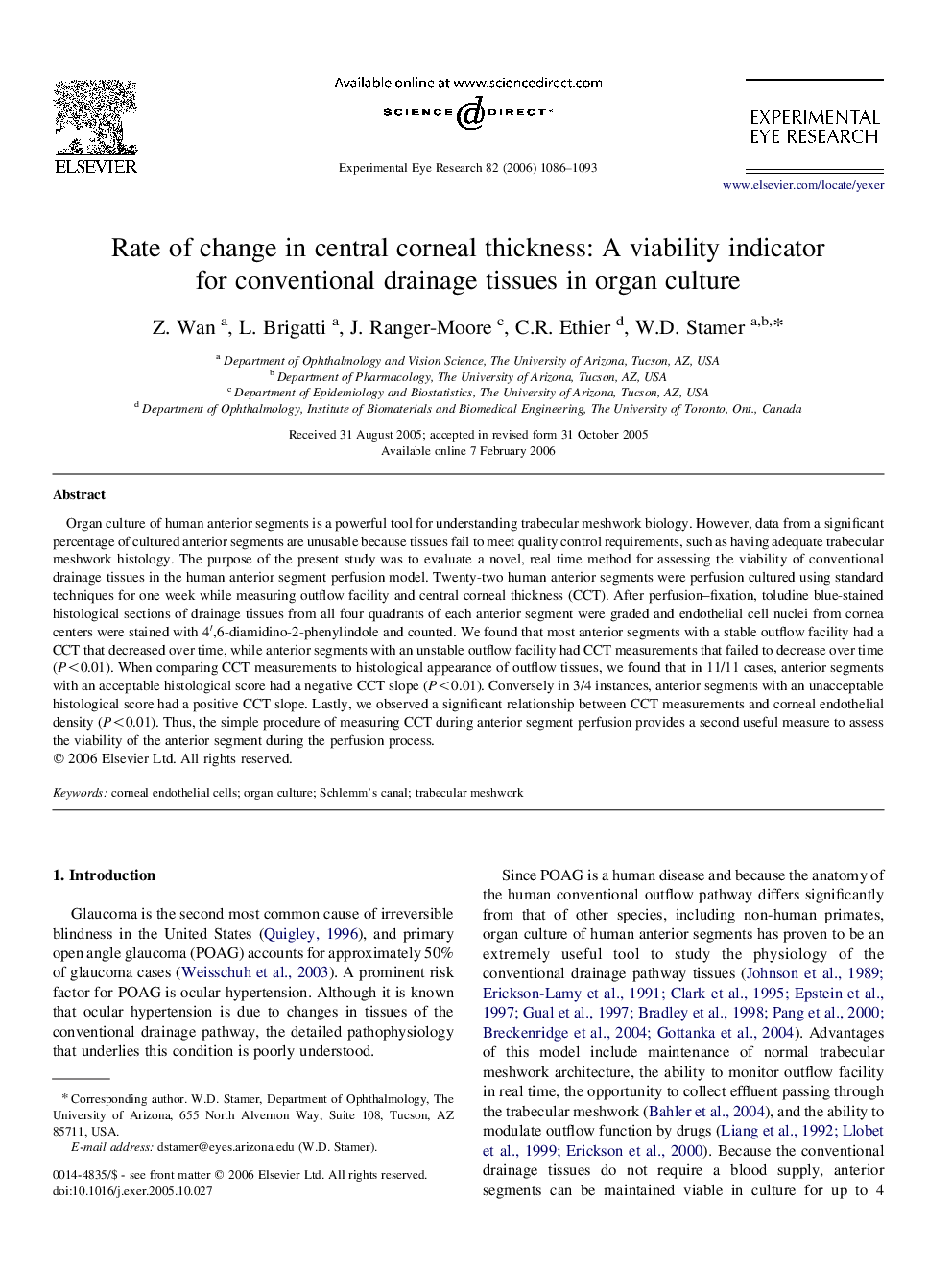| Article ID | Journal | Published Year | Pages | File Type |
|---|---|---|---|---|
| 4012647 | Experimental Eye Research | 2006 | 8 Pages |
Organ culture of human anterior segments is a powerful tool for understanding trabecular meshwork biology. However, data from a significant percentage of cultured anterior segments are unusable because tissues fail to meet quality control requirements, such as having adequate trabecular meshwork histology. The purpose of the present study was to evaluate a novel, real time method for assessing the viability of conventional drainage tissues in the human anterior segment perfusion model. Twenty-two human anterior segments were perfusion cultured using standard techniques for one week while measuring outflow facility and central corneal thickness (CCT). After perfusion–fixation, toludine blue-stained histological sections of drainage tissues from all four quadrants of each anterior segment were graded and endothelial cell nuclei from cornea centers were stained with 4′,6-diamidino-2-phenylindole and counted. We found that most anterior segments with a stable outflow facility had a CCT that decreased over time, while anterior segments with an unstable outflow facility had CCT measurements that failed to decrease over time (P<0.01). When comparing CCT measurements to histological appearance of outflow tissues, we found that in 11/11 cases, anterior segments with an acceptable histological score had a negative CCT slope (P<0.01). Conversely in 3/4 instances, anterior segments with an unacceptable histological score had a positive CCT slope. Lastly, we observed a significant relationship between CCT measurements and corneal endothelial density (P<0.01). Thus, the simple procedure of measuring CCT during anterior segment perfusion provides a second useful measure to assess the viability of the anterior segment during the perfusion process.
